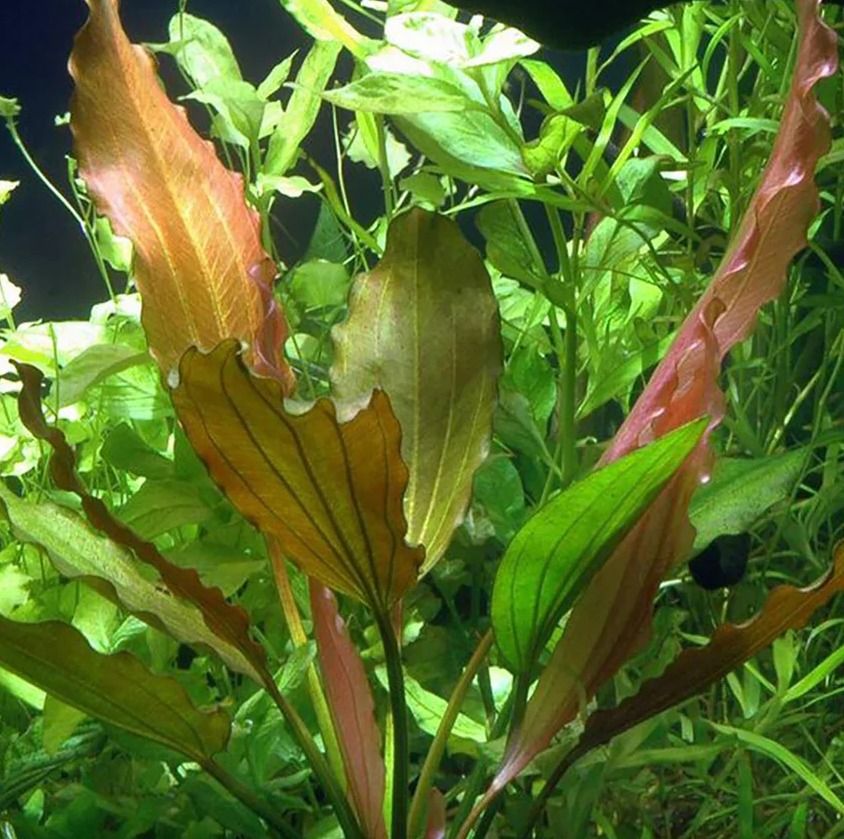Overview: Popular as the Rose Sword Plant, the Echinodorus Rose could be a stunning addition to any aquarium. The striking shades of pink on the leaves make it one of the unique varieties of this genus. Also, the robust growth habit makes it popular among aquarists. Echinodorus Rose is native to South America, typically in the warm and tropical regions. It is a freshwater aquatic plant and can be found growing in slow-moving waters. If you want to add warm colors to your aquarium, adding a few Echinodorus Rose plants will definitely help. Regarding care and maintenance, it is called a beginner plant.
Appearance: Echinodorus Rose is known for its large and attractive rose-pink to red leaves. They are usually lance-shaped. The plant can grow up to 4 to 50 cm in length and 10 to 15 cm in width. The growth form is rosette in which means the leaves radiate from the center in a striking, symmetrical pattern. When the water conditions are good, the leaves display the best coloration, getting deeper pink with reddish hues. Light plays a major role in attaining the signature color of the leaves.
Hard/Soft plant: Echinodorus Rose is considered a moderately hard plant which means it is not particularly difficult to grow, but it does require some attention to achieve its optimal growth and coloration. Since it has wider range for temperature, pH, etc., it is easy to care and maintain, thus regarded a beginner-friendly plant.
Ideal water temperature: Echinodorus Rose prefers water temperatures between 22 and 28 degrees Celsius. This temperature range supports the plant's healthy growth and vibrant coloration. Prolonged exposure to cooler water can slow down its growth, while higher temperatures may cause stress and lead to issues such as yellowing of leaves or slow development.
Lighting condition: Moderate to high light conditions suit really well for Echinodorus Rose to thrive and show its true colors. To achieve its most vibrant colors, it is recommended to use high light levels. It produces deeper hues, while moderate light will result in a more subdued color scheme.
Ideal pH level: The ideal pH range for Echinodorus Rose is between 6.5 and 7.5. Highly fluctuating pH may stunt the plant's growth and put leaves under stress or damage.
Other requirements: Echinodorus Rose performs well when grown in nutrient-rich substrate as it supports the large root system. Supplementing root tabs or liquid fertilizers help plant grow and proliferate. While CO2 supplementation is not a strict requirement for Echinodorus Rose, it can significantly help with growth and coloration. Removing old and yeloowing leaves periodically will upkeep the plant and maintain its look.
Propagation: Echinodorus Rose propagates through runners that grow along the substrate. You can separate the runners from the mother plant and replant them elsewhere in the aquarium.
Do you know: Due to its bold color and large size, Echinodorus Rose is commonly used in mid-ground or background positions in aquascapes. It adds an attractive contrast against green plants, making it a great choice for a focal point in aquariums.















